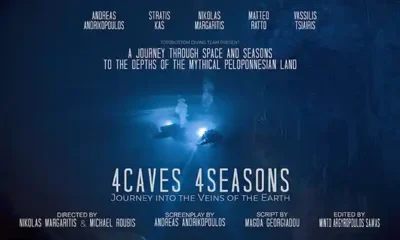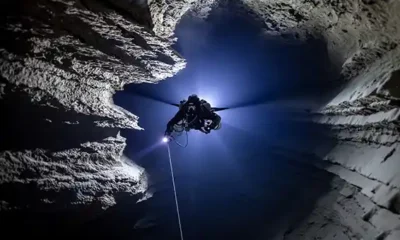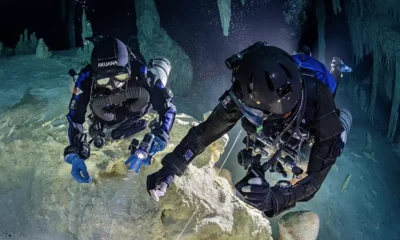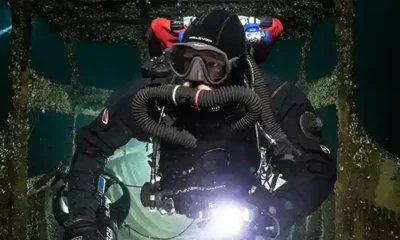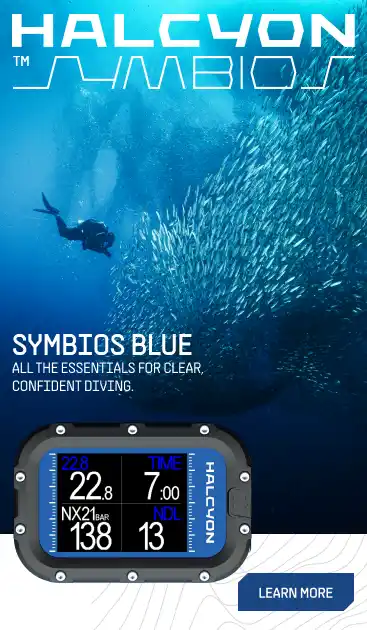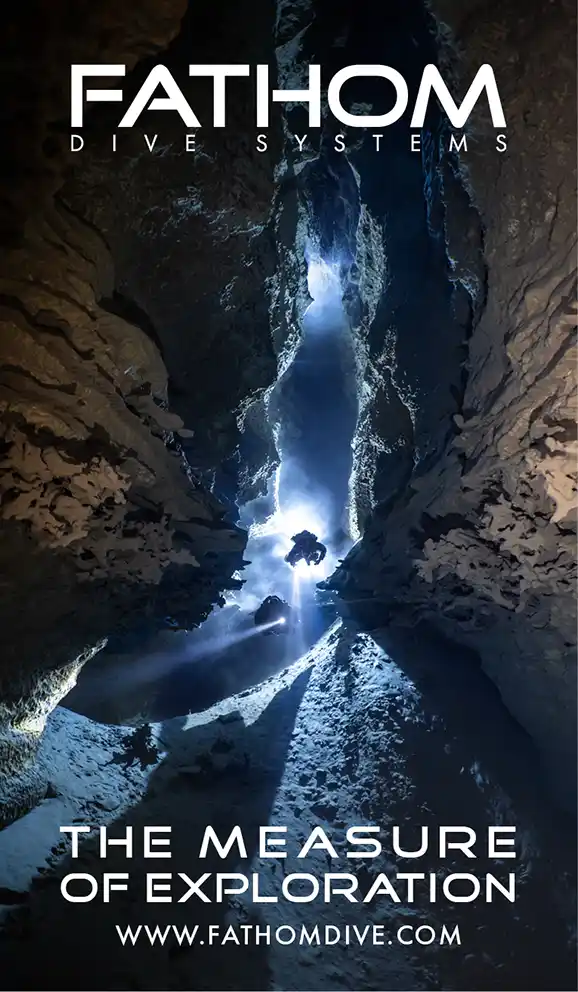News
The Biden-Harris Administration Designated Two New US National Marine Sanctuaries in 2024
Biden-Harris Administration designated the 3rd-largest National Marine Sanctuary
Chumash Heritage National Marine Sanctuary in California to be managed with tribal and Indigenous community involvement, advances President Biden’s ocean conservation goals

In October,, the Biden-Harris Administration announced that NOAA designated 4,543 square miles of coastal and offshore waters along 116 miles of California’s central coast as America’s 17th national marine sanctuary. Chumash Heritage National Marine Sanctuary will conserve the area’s diverse range of marine life and celebrate Indigenous peoples’ connections to the region. It is the third largest sanctuary in the National Marine Sanctuary System.
The sanctuary designation advanced President Biden’s ocean conservation legacy and his America the Beautiful Initiative, which supports locally-led collaborative conservation efforts across the country and sets a national goal of protecting, conserving and restoring at least 30% of U.S. lands and waters by 2030. With this designation, the Biden-Harris Administration has now conserved more than 45 million acres of lands and waters.
“This historic Chumash Heritage National Marine Sanctuary designation, made possible thanks to President Biden’s America the Beautiful Initiative, will help provide critical environmental protections and allow tribal and Indigenous community management of the new sanctuary,” said U.S. Secretary of Commerce Gina Raimondo. “This milestone in our commitment to Indigenous communities and natural lands will boost recreation, tourism and other local industries along California’s central coast.”
“The Chumash Heritage National Marine Sanctuary is the result of state, territorial, local and Indigenous leaders partnering with the Biden-Harris Administration to show that we can protect culturally and ecologically important waters while building a clean energy future,” said Brenda Mallory, Chair of the White House Council on Environmental Quality. “With today’s announcement, President Biden has now conserved more than 45 million acres of lands and waters while protecting sites that honor Indigenous communities and tell a fuller story of our nation.”
Stretching from just south of Diablo Canyon Power Plant in San Luis Obispo County to the Gaviota Coast in Santa Barbara County, the sanctuary will bring comprehensive community- and ecosystem-based management to nationally significant natural, historical, archeological and cultural resources — including kelp forests, rocky reefs, sandy beaches, underwater mountains and more than 200 NOAA-documented shipwrecks.
“NOAA recognizes and celebrates this unique area’s modern day and historic cultural connections to Indigenous peoples. Tribal and Indigenous communities will be co-stewards, as informed by their values, knowledge and traditions,” said NOAA Administrator Richard Spinrad, Ph.D. “The sanctuary designation will support and conserve the area’s rich biodiversity, create new opportunities for research and economic development, including recreation and tourism, and co-exist with renewable energy, fisheries and other sustainable ocean uses.”
The sanctuary’s boundaries exclude areas where future subsea electrical transmission cables and floating offshore substations could be installed outside the sanctuary to connect the Morro Bay Wind Energy Area to the electrical power grid at Morro Bay and Diablo Canyon Power Plant, ensuring that the sanctuary meets both conservation and clean energy goals. NOAA will consider a potential expansion of the sanctuary in the coming years, after transmission cables have been laid.
This sanctuary designation was the result of a decade of work by Tribes, Indigenous Peoples, community leaders, organizations, businesses, state and local officials, and members of Congress — including then-Senator and now Vice President Kamala Harris — to develop and advance the vision for the Chumash Heritage National Marine Sanctuary.
“The announcement of NOAA designating Chumash Heritage National Marine Sanctuary couldn’t have come at a better time,” said Violet Sage Walker, chairwoman of the Northern Chumash Tribal Council, the organization that nominated the sanctuary in 2015 under the leadership of her father, the late Chief Fred Collins. “This recognition is a crucial moment for our community. It will not only raise awareness of the Chumash People around the world, but also honor the legacy of my late father and affirm our commitment to the stewardship of our land. I hope we will be remembered for our dedication to actively protecting and nurturing Mother Earth and Grandmother Ocean.”
“This sanctuary designation marks a hard-fought victory for the Chumash people, our conservation priorities, and the responsible development of offshore wind as California strives to meet its ambitious clean energy goals,” said California Senator Alex Padilla. “Thanks to this designation and sanctuary management plan, the Santa Ynez Band of Chumash Indians will play an active role in preserving their traditions and managing these important cultural and ecosystem resources.”
California Governor Gavin Newsom said the new sanctuary will be a step forward for communities and nature alike. “By respecting and supporting tribal leadership and stewardship, we are bringing California one step closer to meeting our aggressive clean energy goals while protecting biodiversity — and above all else, honoring the land and waters alongside those who have stewarded this area since time immemorial,” Newsom said.
“Generations of U.S. land and water policies have placed Native Americans at a great disadvantage throughout our history,” said Kenneth Kahn, Chairman of the Santa Ynez Band of Chumash Indians. “Today’s announcement is a sign that things are changing. The Chumash tribal government never relinquished its aboriginal right to manage our traditional homelands. We are grateful that NOAA recognizes this inherent sovereignty and welcomed us as a co-steward of the sanctuary that bears our name.”
“The Chumash Heritage National Marine Sanctuary is one step closer to being established with the announcement of the Final Rule,” said Congressman Jimmy Panetta (CA-19). “It has taken some time to get to this point, but we are proud that the federal government engages with local leaders at every step of the way to ensure that everybody is at the table as we work to formally protect this biologically diverse marine ecosystem. Through collaboration, we are getting closer and closer to creating the Chumash Heritage National Marine Sanctuary.”
“I am grateful to the Indigenous and community leaders who have helped advocate for these protections over the past decade and more,” said Congressman Salud Carbajal (CA-24). “The historic designation of the Chumash Heritage National Marine Sanctuary comes not a moment too soon. As our oceans and our communities are facing unprecedented challenges from a changing climate, this new sanctuary comes at a critical time for our region. I look forward to continuing to work with our local stakeholders and federal partners to implement this sanctuary — which will nearly double the amount of coastline protected along the Central Coast — and build on them to protect every coastal community and ecosystem in our region.”
“The Chumash people have played an instrumental role in the stewardship of our lands and waters, especially along our coastline and the Channel Islands. Establishing the Chumash Heritage National Marine Sanctuary is a significant step towards protecting the California coastal region’s important marine ecosystems and honoring its historical, cultural and spiritual significance to the Chumash,” said Congresswoman Julia Brownley (CA-26). “I look forward to continuing to work with tribal leaders, regional and national stakeholders, and the U.S. Department of Commerce as we work to preserve and protect the natural resources and cultural heritage of California’s Central Coast.”
Chumash Heritage National Marine Sanctuary is the fifth designated in California and one of the largest in the National Marine Sanctuary System. The sanctuary designation will take effect following 45 days of continuous session of the U.S. Congress, which is anticipated to be in December 2024.
Biden-Harris Administration Designates New National Marine Sanctuary In New York State
Eastern Lake Ontario to become 16th marine sanctuary in iconic system of marine protected areas

In June, the Biden-Harris Administration announced that it was designating a 1,722-square-mile area in eastern Lake Ontario as America’s 16th national marine sanctuary. Lake Ontario National Marine Sanctuary 一adjacent to New York’s Jefferson, Oswego, Cayuga and Wayne counties 一 will celebrate the region’s maritime cultural history and provide new opportunities for research, education, recreation and maritime heritage-related tourism in local coastal communities and the broader Great Lakes region.
“President Biden is leading the most ambitious conservation agenda in history through the America the Beautiful initiative, and today’s marine sanctuary designation is another key milestone in that effort,” said White House Council on Environmental Quality Chair Brenda Mallory. “For generations to come, families will be able to learn about our nation’s maritime history and the rich cultural heritage of Lake Ontario.”
“Under the leadership of President Biden, there has been an unprecedented expansion in the sanctuary system across our nation and today’s announcement moves that mission forward,” said Deputy Commerce Secretary Don Graves. “Lake Ontario National Marine Sanctuary will help support locally led collaborative efforts and advance economic growth and conservation. Thanks to NOAA and the Biden-Harris Administration, current and future generations will experience this sanctuary and its maritime and cultural resources for all of us to promote, protect and preserve.”
The sanctuary designation advanced President Biden’s America the Beautiful Initiative, which supports locally-led collaborative conservation efforts across the country for the benefit of all Americans and sets a national goal of protecting, conserving or restoring at least 30% of U.S. lands and waters by 2030. With more than 41 million acres already conserved, President Biden is on track to conserve more lands and waters than any president in history.
“The designation of this sanctuary is a milestone for NOAA, New York and the nation,” said NOAA Administrator Rick Spinrad, Ph.D. “Establishing a national marine sanctuary in the cold fresh waters of eastern Lake Ontario opens the door to world-class research and education initiatives, and provides opportunities to support and enhance tourism and the local economy within one of the most historically significant regions in the Great Lakes.”
Eastern Lake Ontario’s waters and coast tells the story of America’s diverse history and heritage, from early Indigenous settlements to today. The area includes transportation and trade routes for Indigenous Peoples and early European explorers, and locations of military conflicts and maritime innovation. Eastern Lake Ontario supported the growth of the young American republic and the nation’s industrial core.
The new sanctuary features an extraordinary collection of 41 known shipwrecks and one known submerged aircraft, among the best preserved in the world, discovered over decades by recreational scuba divers and shipwreck explorers. The shipwrecks, such as St. Peter, a three-masted schooner that was loaded with coal when it was lost in a storm in 1898, embody more than two centuries of the nation’s maritime history.
NOAA will use its expertise to further locate, research and monitor these and other maritime cultural resources. NOAA will also focus on education and outreach through partnerships with Indigenous governments, local partners and institutions.
“From sacred places and cultural practices to lighthouses and historic shipwrecks, this region’s maritime cultural legacy provides meaning and a sense of place to countless generations,” said Nicole R. LeBoeuf, director of NOAA’s National Ocean Service. “NOAA looks forward to working with a wide range of partners to learn, share and celebrate the remarkable history of the eastern Lake Ontario region.”
In January 2017, the adjacent counties and the City of Oswego, with support from the Governor of New York, submitted a sanctuary nomination for the area to NOAA. A diverse group of governments and non-governmental organizations, including the Onondaga Nation, regional and local units of government, historical societies, museums, recreation, conservation, tourism and education groups, endorsed the nomination.
“NOAA acknowledges and respects that eastern Lake Ontario is of cultural, spiritual and historical significance to the Nations of the Haudenosaunee Confederacy, who have been stewards of their homelands for thousands of years and continue to care for these lands and waters,” said John Armor, director of NOAA’s Office of National Marine Sanctuaries. “We are dedicated to building equitable partnerships with Indigenous Peoples in the stewardship of these waters.”
NOAA and the state of New York will co-manage the sanctuary, the third to be designated in the Great Lakes. The designation will take effect following 45 days of continuous session of the U.S. Congress after publication of this action in the Federal Register.
“Lake Ontario’s National Marine Sanctuary will send major waves throughout Upstate as the first-ever national marine sanctuary in New York waters. This designation will preserve Lake Ontario’s historic shipwrecks, boost tourism and protect our beautiful waterways for generations to come,” said Senator Schumer. “From Wayne to Cayuga to Oswego to Jefferson County, this designation will help our shoreline communities protect the beauty of this magnificent lake and drive interest on Lake Ontario’s rich history. I will always fight to increase economic, educational, and tourism opportunities for New York’s Great Lakes communities.”
“Lake Ontario has a rich maritime history, and the designation of this sanctuary will open the door to new opportunities in the region,” said Senator Gillibrand. “I am proud to see NOAA recognizing eastern Lake Ontario’s maritime cultural history and designating it as New York’s first national marine sanctuary. This designation is monumental for New York, and I look forward to seeing the new research, educational, and tourism opportunities created for the region.”
“The designation of the Lake Ontario National Marine Sanctuary will ensure long-term protection and proper management of our historic shipwrecks and maritime heritage sites in eastern Lake Ontario, off the coast of Oswego, Jefferson, Cayuga, and Wayne counties. This important designation will not only safeguard these valuable historic sites but also promote educational opportunities and support tourism in our community. The community is eager to have the necessary resources to protect these sites and continue educating future generations about our region’s rich maritime history,” said Congresswoman Tenney.
NOAA’s Office of National Marine Sanctuaries serves as the trustee for a network of underwater parks encompassing more than 620,000 square miles of marine and Great Lakes waters. The network includes a system of 15 national marine sanctuaries and Papahānaumokuākea and Rose Atoll marine national monuments. The system works with diverse partners and stakeholders to promote responsible, sustainable ocean uses that ensure the health of our most valued ocean places.
Climate, weather, and water affect all life on our ocean planet. NOAA’s mission is to understand and predict our changing environment, from the deep sea to outer space, and to manage and conserve America’s coastal and marine resources.
Media contacts
Vernon Smith, vernon.smith@noaa.gov, (240) 638-6447
Kimberly Rodgers, kim.rodgers@noaa.gov, (771) 233-3988




















